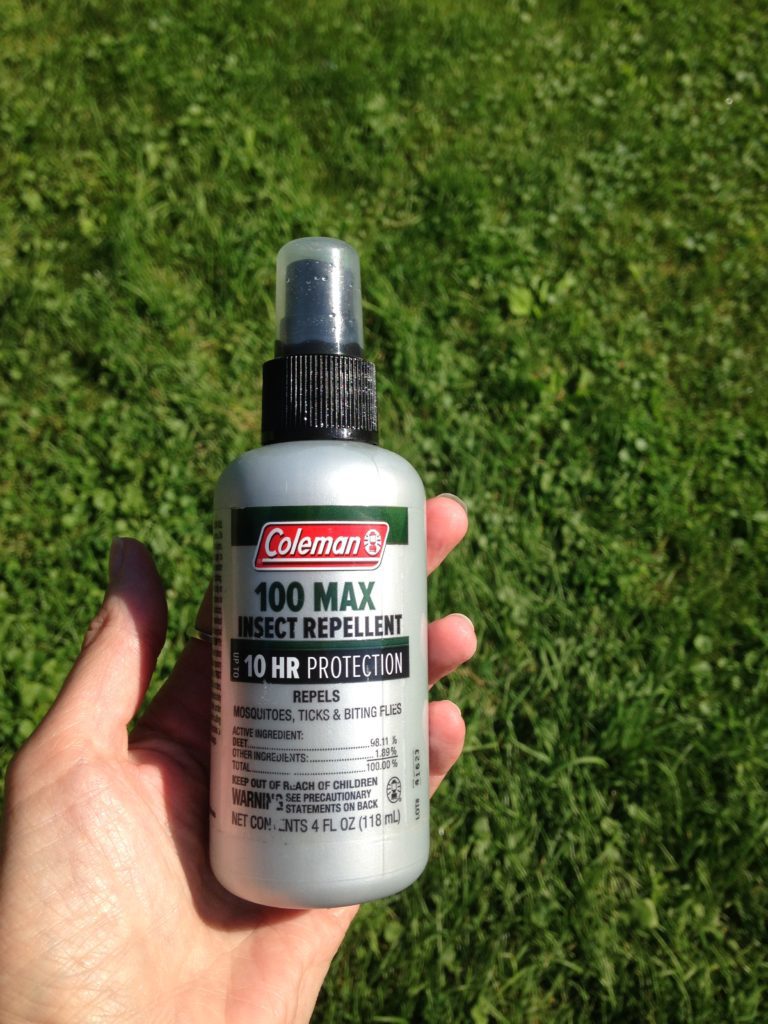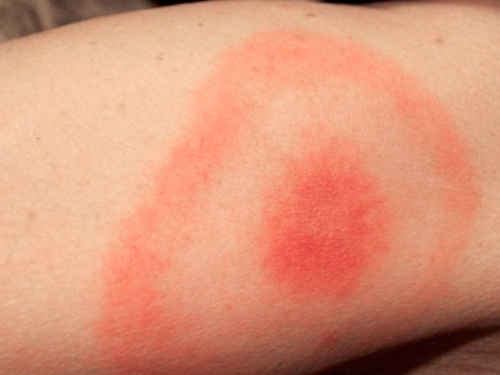
What Are Ticks
Ticks are arachnids (related to the spider but most closely related to mites) that live on the blood of mammals and birds. Ticks are incredibly tiny, about the size of the tip of a pencil, so they are hard to pick out unless they are engorged with blood. They have eight legs and are dark brown to black in color. There are several kinds of ticks that can be picked up in the wild.
The Deer Tick is by far the smallest and as well as being one of the worst offenders for transferring Lyme Disease to humans. Ticks are not responsible for Lyme Disease; they are carriers of the bacteria that is responsible for the illness and transfer it to humans via biting them and sucking their blood.
How to Avoid Ticks
Ticks usually hang out in high grass or shrubbery, just waiting for someone to walk by to hitch a ride. Avoid cutting through the tall grass and brush, and sticking to the trail is the best way to stay tick-free. Also, try to walk in the center of the path and avoid brushing up against the grass or brush on the side of the trail. It also helps to wear a long sleeve shirt and long pants.
Wear a tick repellent, such as Coleman 100 Max. I swear by this repellent. I am a mosquito’s favorite meal, and it protects me from them completely. As a tick has never bitten me, and I’m not exactly a “stick to the trail” kind of person, I am assuming that it is doing its job repelling ticks as well.

Checking for Ticks
Just because you get bitten by a tick does not automatically mean you will get Lyme Disease. Not all ticks carry the bacteria, but it is vital that you check yourself over once you finish hiking. Ticks do not hurt when they bite, so don’t rely on feeling the bite.
Remove your clothing after the hike as soon as possible, wash in hot water and dry on high heat. Ticks will usually stand out on light-colored clothing. If you are able, the experts recommend showering as well. If you can, ask someone to check you over. Otherwise, stand in front of a full-length mirror and try to check over your entire body.
Removing Ticks
God forbid you should ever find one of these little demons in you or your child. However, if you do, what is your next step? This part is tricky. If you find a tick, you’ll want to make sure that the head is intact when it is removed. There are loads of “great ideas” on removing them, but these aren’t necessarily the best ways. Ideally, it would help if tick voluntarily decides to let go. If you try to remove it forcibly, you run the risk of leaving the head embedded in the skin. This can lead to a secondary infection.
Most internet posts will tell you to pull it out with tweezers, and heavens knows that would probably be my first course of action because every fiber of my body would be screaming… “rip that sucker out of me now!” However, the best way to remove a tick is to soak a cotton ball in dish soap and hold it on the tick for 30 seconds. The tick should voluntarily decide to let go. The most crucial part is cleaning and disinfecting the site thoroughly. Even if the tick doesn’t carry the Lyme Disease bacteria, it can still give you an infection. I have not personally tried this method, as I never had a tick, and I seriously hope I never have to.
Lyme Disease- What to Look For
With almost 329,000 new cases discovered every year, Lyme Disease is the 5th most reported disease in the United States. The key to effectively treating Lyme Disease is early detection. If caught in the early stages, Lyme Disease is very treatable.
If you should find a tick embedded in your skin, you will want to observe the bite site for several weeks. If the tick was carrying the Lyme Disease bacteria, a rash will appear around the site sometime within 2-30 days, but it has been known to occur several weeks later. The rash has a bulls-eye appearance. However, some people who have been diagnosed with Lyme Disease do not recall seeing a bulls-eye rash. Therefore it is essential to recognize the other symptoms that accompany this disease. These include fatigue, joints that are achy and stiff, possibly even swollen, fever or headache, night sweats, difficulty concentrating, light sensitivity, and loss of balance or coordination.
Lyme Disease can mimic other illnesses, such as the flu. If you suspect that you have been infected, you will need to express this to your doctor, especially if you are an avid hiker prone to exposure. Early detection is the key to fighting this disease.

Don’t Let Ticks Keep you From Enjoying Nature
It can be scary thinking of all of these little bloodsuckers waiting to pounce on you during your hike or just getting out into nature. Don’t let that deter you. Be prepared, take precautions, and you can have a fantastic time enjoying all of the great outdoor fun New York has to offer.
Oh, and if you happen to see an opossum or a wild turkey, thank them for helping control the tick population. These animals are the unsung heroes of bug control. Opossums eat more than 5000 ticks per year, and wild turkeys eat a whopping 200 per day, helping prevent the spread of Lyme Disease.

Protect Your Pets

Humans aren’t the only ones affected by ticks. Animals can also be affected by Lyme disease from tick bites. You don’t even have to take your dog hiking with you for them to encounter ticks. They can be in your own yard.
While I have never found a tick on myself, in recent months as we’ve hiked with Nova, I have pulled quite a few off of her. Fortunately, her fur is light-colored, and the ticks stand out on her fur. Her coat is also quite dense and fluffy, so it takes them a while to burrow in. Since I can’t spray her down with tick repellent, we have taken the extra step of protecting her by putting her on Simparica Trio, a chewable tablet that protects dogs and cats from fleas, ticks, and heartworm. We also have had her vaccinated for Lyme Disease, just because the tick has to bite her for the Simparica Trio to work, there is a remote chance of her contracting Lyme Disease.